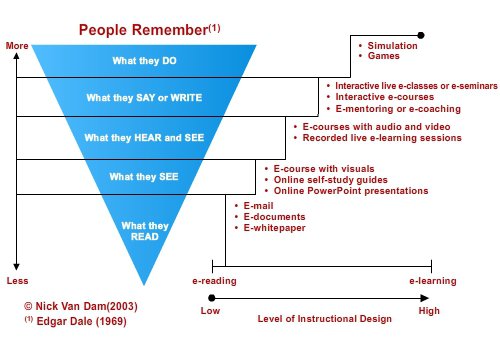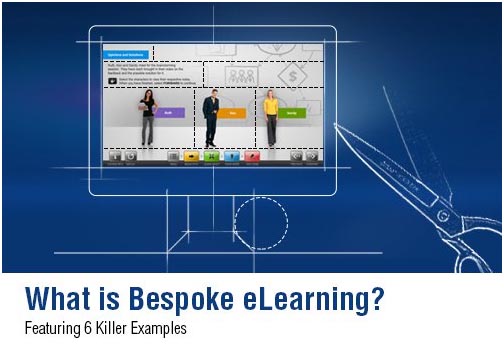
In the dynamic world of eLearning, gamification has emerged as a transformative strategy in L&D, bolstering the learning journey with interactive and compelling game-like elements. In this article, I will walk you through some of the benefits of Gamification. From stimulating engagement to fostering lasting knowledge retention, gamification is reshaping the learning landscape.
What is Gamification?
Gamification is the integration of game mechanics, like points, badges, leaderboards, and progress tracking, into non-game environments, such as learning or business settings, to enhance user engagement and participation. It capitalizes on the human psychological predisposition to engage in gaming. The concept extends beyond the realm of mere entertainment; it’s about applying game-design thinking and elements to various aspects of life, making them more interactive and enjoyable. Gamification taps into the fundamental desires for recognition, achievement, competition, and collaboration, effectively transforming routine tasks into more engaging and rewarding experiences.
Why Gamification Works – The Science Behind Gamification in L&D and eLearning
Gamification capitalizes on the cognitive and emotional aspects of learning by integrating game mechanics into L&D strategies. This approach is backed by several psychological theories and neuroscientific findings:
- Cognitive Evaluation Theory: Suggests that intrinsic motivators such as autonomy, mastery, and purpose enhance the quality of learning. Gamification naturally incorporates these elements, making eLearning intrinsically rewarding.
- Neuroscience and Dopamine Release: Achievements in games trigger dopamine release, a neurotransmitter associated with pleasure and learning, which reinforces continued engagement and information retention.
Gamification aligns with established educational theories in the context of L&D and eLearning:
- Constructivist Learning Theory: Proposes that learners construct knowledge through experiences. Gamification provides these interactive experiences.
- Experiential Learning: Encourages learners to learn through action, reflection, and experimentation, a process that is readily facilitated by gamified elements.
How Gamification Drives Serious Learning
Gamification plays a crucial role in transforming learning environments into interactive and immersive experiences. By integrating elements like point scoring, competition, and rules of play, it addresses various learning styles and increases student engagement. This approach not only makes learning more enjoyable but also enhances retention rates and encourages practical application of knowledge. Gamification introduces a hands-on aspect to education, where learners can experiment, solve problems, and see the real-world implications of their decisions in a controlled, risk-free setting. It effectively bridges the gap between theoretical learning and practical application, making education a more impactful and meaningful process.
How Gamification Motivates Employees
Gamification proves to be a powerful tool for enhancing employee motivation and engagement in the workplace. By incorporating game mechanics, gamification transforms mundane tasks into exciting challenges. It taps into the intrinsic motivation of employees, offering recognition and rewards for accomplishments, fostering a competitive yet collaborative environment. This approach not only boosts productivity but also promotes a positive workplace culture where achievements are celebrated and personal growth is encouraged. Gamification makes work more than just a task; it turns it into a rewarding journey of skill development and achievement.
Is Gamification a Worthwhile eLearning Strategy?
Despite initial skepticism, gamification has proven to be a valuable strategy in today’s fast-paced digital landscape. While concerns about costs and development time still exist, the rise of user-friendly gamification platforms has made the integration into eLearning systems more accessible and cost-effective. Organizations are recognizing that the immersive nature of gamified learning can significantly enhance learner engagement, leading to tangible outcomes.
The Role of Gamification in Learning Enhancement
Successful learning combines three essential elements:
- 70% from real-life and on-the-job experiences, tasks, and problem solving
- 20% from feedback and from observing and working with peers and role models
- 10% from formal training
Take a look at this diagram on the techniques used in learning design approaches and their relationship to retention of learning:
Contemporary learning models underscore the importance of experiential learning, which constitutes a substantial portion of knowledge acquisition. Gamification enriches this model by:
- Stimulating a spirit of healthy competition.
- Fostering a robust sense of accomplishment.
- Crafting captivating learning experiences that pave the way for behavioral transformation.
- Inspiring learners to proactively engage with content, thereby driving intentional actions and influencing positive behavior patterns.
Use Cases of Gamification in L&D
The application of gamification as a significant tool in Learning and Development (L&D) is evident in various use cases:
- Skills Training: Implementing gamified scenarios to simulate real-world challenges, helping learners to develop specific skills in a safe, controlled environment.
- Onboarding Processes: Using game elements to make the onboarding of new employees more engaging and informative, facilitating a smoother integration into the company culture and processes.
- Compliance Training: Transforming mandatory compliance training into an interactive experience, encouraging better engagement and understanding of essential regulations and policies.
- Soft Skills Development: Leveraging role-playing games and simulations to enhance soft skills like communication, teamwork, and leadership in an interactive manner.
- Continuous Professional Development: Encouraging ongoing learning and development through gamified challenges and rewards, fostering a culture of continuous improvement and lifelong learning.
- Performance Management: Incorporating gamification in performance assessments to motivate employees to achieve specific goals and objectives, making the process more transparent and rewarding.
- Employee Engagement and Motivation: Boosting engagement and motivation by introducing elements of competition, recognition, and achievement into L&D programs.
Benefits of Gamification
Gamification has revolutionized the L&D landscape, delivering a myriad of benefits not only to learners but also to the organizations behind their development. Here’s how gamification creates a win-win situation for all involved:
For Learners:
- Increases Engagement and Motivation: Gamification transforms traditional learning content into interactive challenges, making the process more exciting and engaging.
- Encourages Active Participation: Interactive elements like quizzes and leaderboards prompt learners to take an active role in their learning journey.
- Fosters Achievement and Progress: The achievement system in gamification, through badges and awards, helps learners track their progress and feel accomplished.
- Enhances Critical Thinking: Game-based problem-solving scenarios cultivate analytical skills, preparing learners for real-life challenges.
- Boosts Confidence: Mastery of gamified tasks builds self-assurance in learners’ abilities to tackle complex subjects.
- Encourages Risk-taking: The low-stakes environment of gamification encourages learners to explore and experiment without fear of failure.
- Personalizes Learning: Adaptive learning paths in gamification cater to individual learner’s pace and style.
- Improves Memory Retention: The interactive and repetitive nature of games helps in better information recall.
For L&D Departments:
- Provides Measurable Data: Gamification systems offer analytics on learner engagement and success rates.
- Allows Real-time Adjustments: Immediate feedback from gamified activities enables quick course corrections to optimize learning outcomes.
- Encourages Peer Learning: Multiplayer aspects and discussion boards within gamified learning foster collaborative skills.
- Facilitates Behavior Analysis: Learner interaction with games provides insights into preferences and behaviors.
- Promotes Continuous Learning: The addictive nature of games can instill lifelong learning habit.
- Reduces Costs: Digital gamification platforms can be more cost-effective than traditional in-person training.
- Streamlines Onboarding: Gamification makes the onboarding process faster and more enjoyable for new hires.
- Enhances L&D Reputation: Successful gamification strategies can raise the profile and perceived value of L&D within an organization.
For the Business:
- Drives Competitive Advantage: Well-trained employees through gamification become a strategic asset.
- Increases Employee Retention: Engaging learning experiences can result in higher job satisfaction.
- Improves Performance: Gamification aligns learning outcomes with practical job performance improvements.
- Enhances Adaptability: Employees trained through gamification adapt more readily to change.
- Encourages Innovation: Gamified learning often involves creative problem-solving that can lead to innovative ideas.
- Leads to Better Customer Satisfaction: Skills gained through gamified learning translate to improved customer service.
Conclusion:
Embracing gamification in eLearning transcends beyond mere fun; it’s a strategic move towards immersive, impactful learning experiences. With its proven ability to enhance memory, motivate learners, and drive business performance, gamification stands as a cornerstone in modern L&D programs. As we adapt to evolving learning needs, gamification is not merely beneficial—it’s essential for staying ahead in a competitive corporate world.




